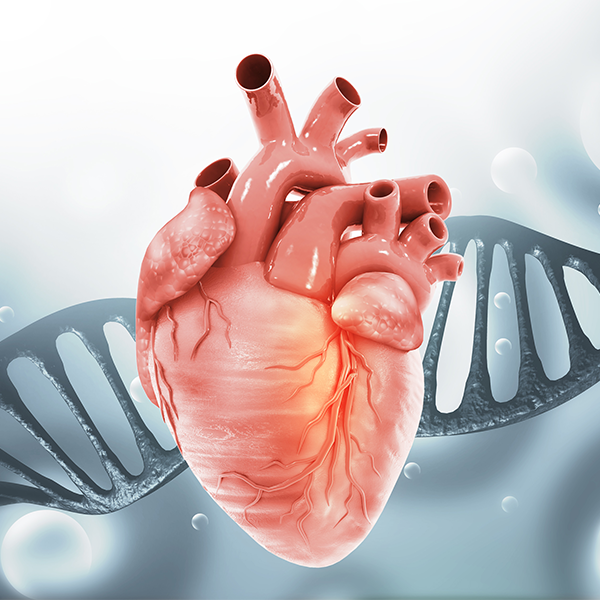-
Mayo Clinic Q and A: Chest pain despite normal stress test

DEAR MAYO CLINIC: What could cause chest discomfort or shortness of breath during exercise or other physical activity in women who have had a “normal” stress test?
ANSWER: Chest pain or shortness of breath that happens with exertion could be symptoms of a number of medical conditions — even when the results of a stress test appear normal. The two most common stress tests are echocardiogram (or echo) stress tests and nuclear stress tests.
An echocardiogram uses sound waves to make up images of the heart beating and pumping blood. For an echo stress, you walk on a treadmill to increase your heart rate, or you may be given medication that increases your heart rate. As your heart rate rises, the health care team monitors you to see if the heart muscle is pumping as strongly as it should.
If there is significant blockage in a blood vessel that leads to the heart ― a coronary artery ― the part of the heart muscle supplied by that vessel won’t pump as vigorously as the other parts of the heart muscle around it. The stress echo images look at how the heart is pumping at rest compared to after the stress portion of the test. If the heart function is normal at rest but doesn’t pump as strongly after the stress portion, this can also be a sign of underlying coronary artery disease.
Echo images done at rest show how strong the heart is pumping and if there is evidence of a previous heart attack. Additionally, echo images can provide information about the heart valves, the lining around the heart, and if there is high blood pressure in the lungs, a condition called pulmonary hypertension. The echo can also show how efficient your heart is pumping blood around the body (the ejection fraction). Some individuals have symptoms of shortness of breath due to congestive heart failure. An echo will show if the heart function is impaired due to a weakened pump (heart failure with reduced ejection fraction) or a stiffened pump (heart failure with preserved ejection fraction).
If your doctor suspects you have coronary artery disease, the other common type of stress test is called a nuclear stress test. Nuclear stress tests also can be done either while on a treadmill or with medication to stimulate the heart. The test looks at the blood flow to the heart and overall heart function. If there was a significant blockage in a blood vessel to the heart, blood wouldn’t be able to travel as well downstream to the heart muscle, and on the nuclear images we would see the affected part of the heart muscle shows reduced blood flow compared to neighboring parts.
Nuclear stress tests provide information about the blood flow to the heart. If there is an area in the heart that shows reduced blood flow compared to the surrounding heart muscle, it’s usually a sign of a critical blockage in a coronary artery. The nuclear stress test also provides information about overall heart function, however doesn’t provide information about the heart valves or lining around the heart (pericardium) the way an echo does.
An echo or nuclear stress test may not reveal certain conditions, such as microvascular angina. That happens when cholesterol builds up in the smallest blood vessels that supply the heart. Nuclear and echo stress tests don’t assess for changes in those tiny vessels. Some women may have coronary artery vasospasm — a muscle spasm affecting the thin muscular layer of the coronary arteries. This condition can cause chest discomfort with a normal stress test result.
A normal stress test result only shows that there is not a significant coronary artery blockage. A smaller blockage could be present that isn’t picked up by the stress test. Being attentive to risk factors for heart disease (such as high cholesterol, family history, diabetes, tobacco use and high blood pressure) is still important even when a stress test is normal.
It’s possible, too, that the cause of chest pain or shortness of breath isn’t related to the heart. It could be a lung disorder, such as a blood clot to the lungs, known as a pulmonary embolism. Additionally, other causes of chest discomfort include spasm of the esophagus, diseases of the aorta, gastroesophageal reflux disease, musculoskeletal pain, fast heart rhythm abnormalities and costochondritis. Other causes of shortness of breath include underlying lung disease such as COPD, asthma and deconditioning.
Finally, no test is 100 percent accurate. A stress test can be wrong for a variety of reasons. For example, a nuclear stress test may be inaccurate if someone has severe blockages in all three main coronary arteries. The test looks for differences in blood flow between areas of the heart. If the entire heart has reduced blood flow, no one area of the heart will look abnormal compared to the rest.
If you’re having chest pain or shortness of breath following a normal stress test, continue to seek medical evaluation. Work with your doctor to keep investigating until the source of the symptoms is identified. — Amy Pollak, M.D., Cardiovascular Diseases, Mayo Clinic, Jacksonville, Fla.







